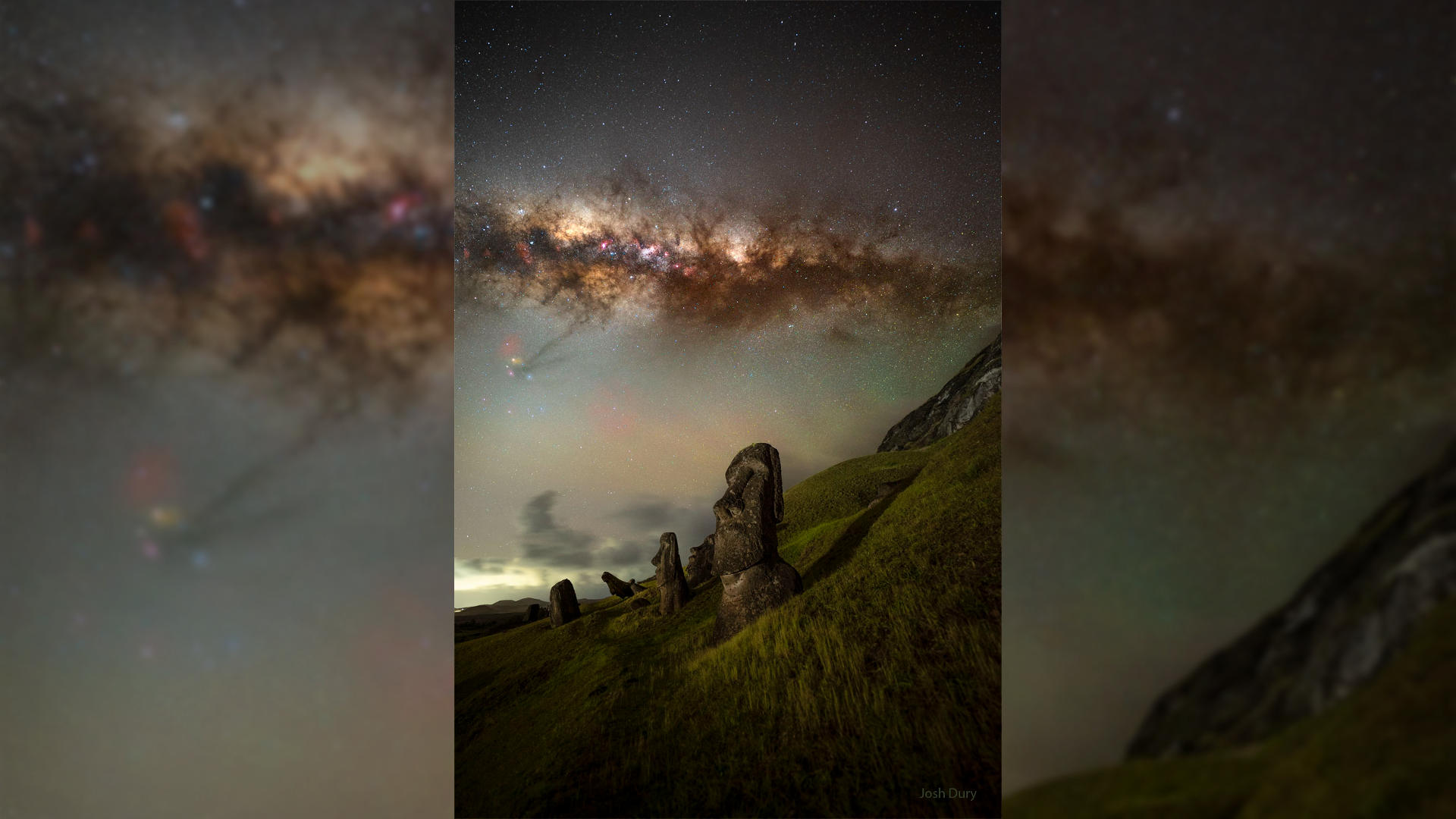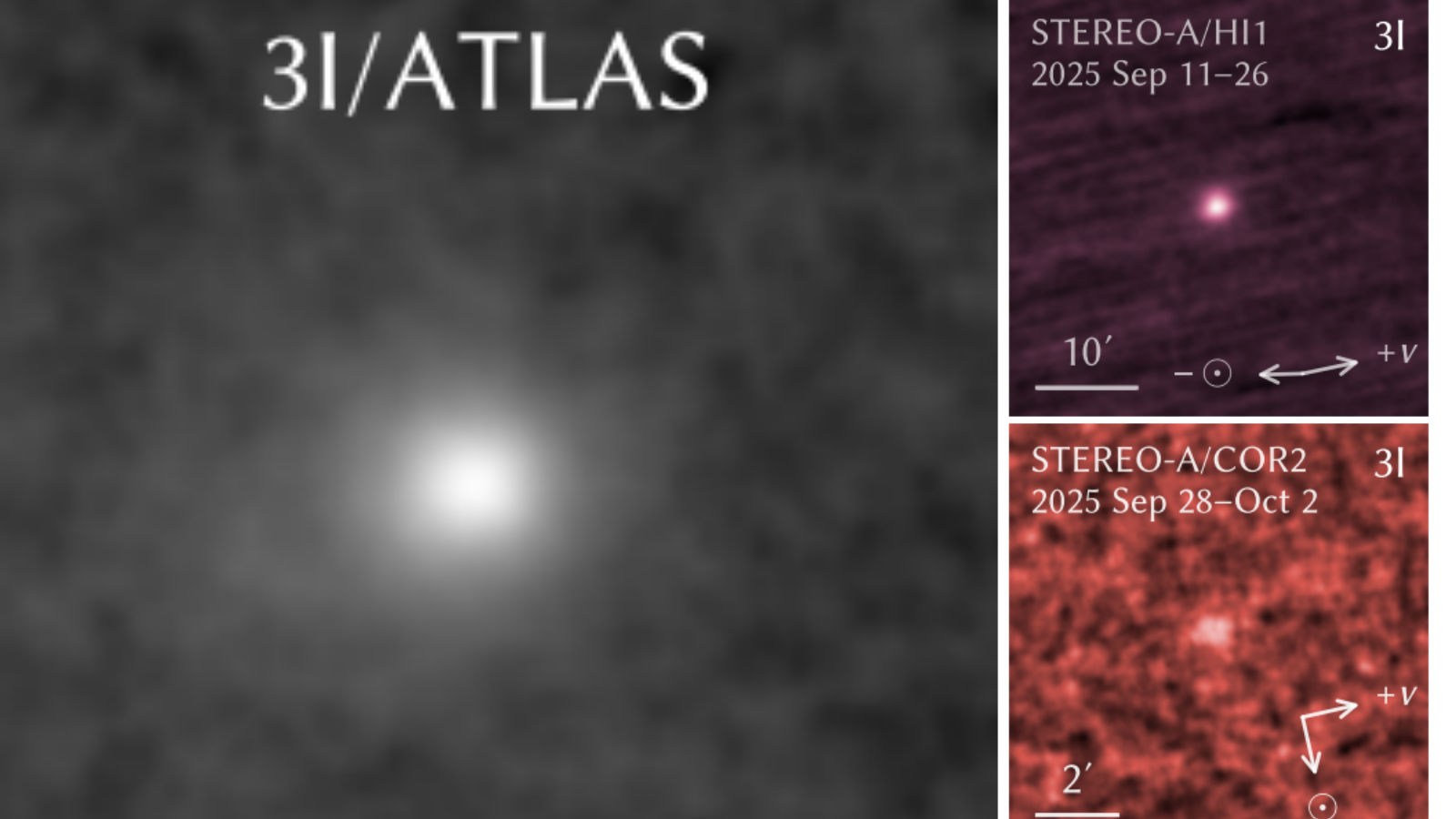Milky Way swirls over famous Easter Island statues in stunning photo
The Moai statues of Easter Island have some of the best views of the night sky on Earth.

Sometimes a photo can captivate so powerfully that you are transported to another place and time.
When photographer Josh Dury traveled to Easter Island for last month's annular solar eclipse, he wasn't going to let a single moment go to waste. Although primarily there for the celestial day-time alignment, with support from the islanders, Dury also managed to capture some overnight images alongside some of the island's famous statues, known as Moai.
Due to its remote location, Easter Island has one of the darkest skies on Earth. Capitalizing on the novel setting, Dury set up one of his cameras next to a row of Moai statues to capture the vibrant arm of the Milky Way painted across space and time. Dury posted the photo to social media, with the title "Aringa Ora O Te Tupuna” (The Living Face of the Ancestors). The shot was impressive enough to be selected as a NASA's Astronomy Photo of the Day (APOD).
A post shared by JOSH DURY PHOTO-MEDIA B.A. FRAS | ‘STARMAN’ (@josh_dury_photomedia)
A photo posted by on
Dury — a contributing expert for Space.com — is no stranger to astrophotography, or the honor that comes with being chosen as one of NASA's APODs. Another one of his photos, featuring the Perseid meteor shower over the iconic Stonehenge, was chosen as the NASA APOD over the summer.
Dury describes the night he took the photo as "one of the most powerful, emotional moments" of his life, dedicating the image "for the islanders and the ancestors."
"In native Rapa Nui language, 'Aringa Ora O Te Tupuna' translates to English as 'The Living Face of the Ancestors'. I believe this phrase encapsulates the bridge between art, science and culture as well as the importance of astronomy to the Rapa Nui people," Dury said in the post.
Easter Island is home to more than 900 giant Moai, with more still being discovered. The statues average about twice the height of a human and weigh up to 14 tons (12,700 kilograms). Little is known about the Moai, but they are estimated to have been sculpted around 600 years ago, and may represent leaders of the ancient Rapa Nui civilization.
Breaking space news, the latest updates on rocket launches, skywatching events and more!
Join our Space Forums to keep talking space on the latest missions, night sky and more! And if you have a news tip, correction or comment, let us know at: community@space.com.

Josh Dinner is the Staff Writer for Spaceflight at Space.com. He is a writer and photographer with a passion for science and space exploration, and has been working the space beat since 2016. Josh has covered the evolution of NASA's commercial spaceflight partnerships and crewed missions from the Space Coast, as well as NASA science missions and more. He also enjoys building 1:144-scale model rockets and human-flown spacecraft. Find some of Josh's launch photography on Instagram and his website, and follow him on X, where he mostly posts in haiku.
